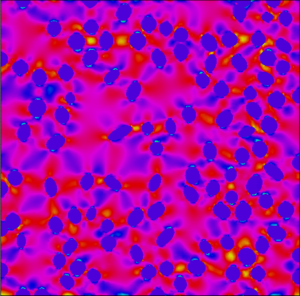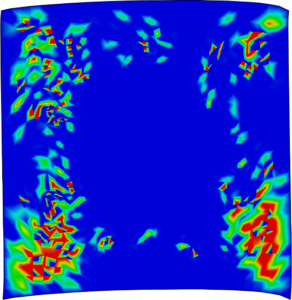Simulation of multifunctional materials
A coupling between magnetic and electric fields as material properties (ME effect), and not as a result of MAXWELL’s equations, can be measured in only a very few crystals and also in a very weak form. From a technical point of view, this type of quasi-static conversion from magnetic to electrical energy and vice versa is very interesting. It enables a wide range of applications in new multifunctional devices such as data storage or in medical technology fields. In particular, the magnetic measurement of brain activity can be mentioned as medical applications. Very weak magnetic fields, which are induced by the smallest electrical impulses of the active nerve cells in the brain, are converted into an electrical voltage using the sensors based on the ME coupling. Compared to conventional devices such as magnetic encephalograph (MEG), magnetoelectric sensors make a more cost-effective measuring device possible, that can be used outside the medical laboratories. For this purpose, we have developed our own numerical simulation tools and algorithms to simulate such material behavior and therefore are able to calculate the ME coupling.
Physically (non) linear simulation of magnetoelectric composites
The classic form of ME simulation is the modeling of linear coupling: magneto-electro-elastic (MEE) calculation. However, in many cases, a MEE calculation is not enough. Therefore, in addition to linear calculations, we also developed physically non-linear calculation (MEEn).
Components of the ME composites: piezoelectric, ferroelectric, ferromagnetic as well as magnetostrictive and non-multifunctional materials.

Polarization (Fe) and magnetization simulation (Fm)
Each single component of an ME composite material exhibit strongly physically non-linear and, in some areas, irreversible behavior. Therefore, it is necessary to simulate also the polarization or magnetization of individual components in advance.

Damage simulation in the polarization (FeD) and magnetization process (FmD)
The numerous areas highlighted in red shown in the left figure correspond to macroscopic cracks. Due to residual stresses, mostly during polarization and magnetization, damage would occur within the composite components. Damage to multifunctional materials reduces the service life of the composite and leads to a decrease in the ME coupling.


